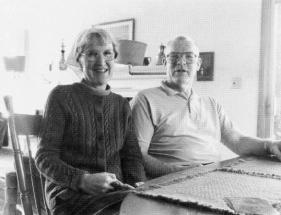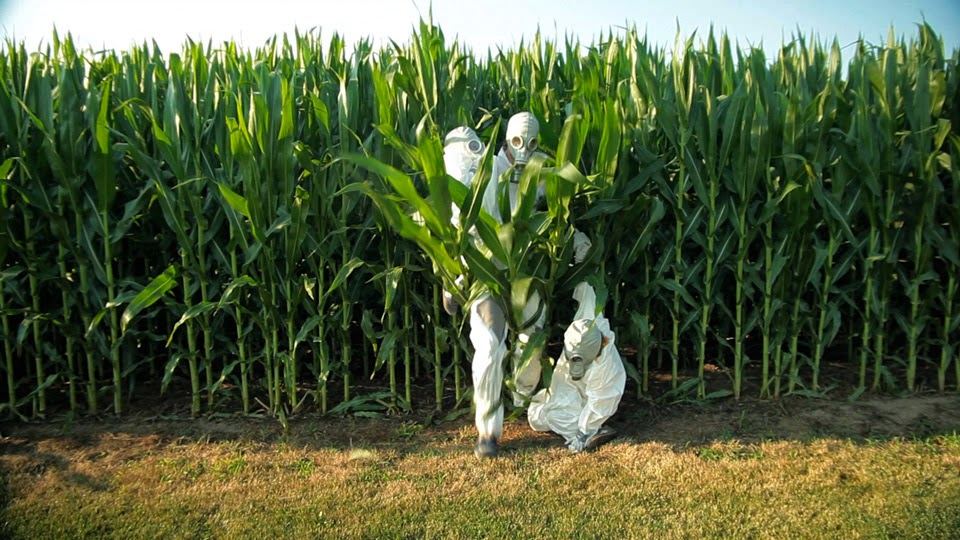
I am writing today about a woman you may never have heard of - but she was a hero of science, and I want to share her story.
Professor Mike Newton worked at Oregon State University for 58 years, published almost 400 papers, and was, in his words, a very healthy guinea pig after voluminous and nearly continuous exposure to compounds like Tetrachlorodibenzo-p-dioxin, which the science community calls TCDD and activists simply call "dioxin" in their fundraising campaigns.
I got to know him(1) after we published a piece on continual dioxin hype in our Priorities magazine and he read it and wrote me a nice email about his studies on human skin absorption of 2,4,5-T and the half-life of 2,4,5-T acid in the body (23 hours, I learned). He told me he evaluated the concentration of TCDD in wildlife (Aplodontia rufa, the mountain beaver, and Odocoileus hemionis, the blacktailed deer) whose habitats were sprayed at operational rates used in forest weed control. No symptoms from 2,4,5-T or TCDD were detected, he noted. All fine science, but that dioxin horse is not going back in the barn, statisticians beat scientists there.(2)
Then an email told me something really fascinating. In 1972, he was asked by the National Academy of Sciences to evaluate the effects of herbicides in Vietnam. Most of you know now they were talking about Agent Orange (and White - Picloram/2,4-D). He was the field guy and created hundreds of sprayed plots at various rates including the 3 gallons per acre rate of the undiluted defoliants. With a backpack sprayer connected to a spray boom, he experimented in vegetable gardens, rice paddies, mangrove wetlands, forests, inland and coastal areas, you name it, anything that might have been exposed to the chemicals.
He literally wrote the book on Agent Orange, I realized.(3) Why didn't he lead with that? That is the nature of scientists, of course. Most are too humble.(4)
But he was passionate about one thing. His wife Jane. In our correspondence and phone conversation she came up numerous times.
When he started out in academia in the 1950s, it was not the high-paying career it is now. While the average professor makes a very nice six-figure income these days, thanks to the Reagan boom in government funding of basic research starting in the 1980s, it was not so then. As a young grad student-professor at Oregon State University College of Forestry, he handled high-dioxin herbicides for 20 years. He spoke of his days with a leaky backpack sprayer and varied phenoxy herbicide esters in diesel fuel at dilutions from 25% down to 4%.
After a hard day of having chemical goop soaking his clothes, he came home and his wife Jane would launder them by hand, after her own long day of caring for the children. They couldn't afford a washing machine. No one used protective clothing then.(5)
I stopped him at one point during our talk and said, "Mike, I feel like Jane is the real science hero in the story. She didn't sign up for any of that."
He laughed and noted she was 87 and the picture of health.
That was in 2016. She passed away a short while ago, and it took me this long to write about it. But we are coming up on our 40th anniversary celebration and a lot of the people who we want to celebrate, or celebrate with us, have either passed on or don't feel well enough to travel.
And some don't get enough attention when they are with us. Mrs. Newton didn't just keep the Professor in clean clothes, she was a staunch advocate for responsible land management. As a founding member of Oregon Women in Timber, she educated the public and Congress about balancing the needs of natural resource industries. I can't say this is true but it is rumored that Doug Costle, one of the architects of the United States Environmental Protection Agency and Administrator from 1977 to 1981, learned to hide when she was around. Today the organization has evolved into the statewide Talk About Trees organization and they educate 150,000 students per year about forestry.
Just recently I wrote how Europe is going back to burning wood because it is renewable and under their legalese it doesn't cause smoke. They could sure use a Jane Newton to talk some sense into them right about now.
NOTES:
(1) He obviously loves the land, like me, but he started hunting at age 9, three years earlier than I did. He was also a military officer. But our similarities end there. He did science, I write about it. And my feet are a rather mediocre 11D.
(2) The linear no-threshold model (LNT) is also probably here to stay after 70 years, despite it being the worst form of junk science, and while our EPA has literally written the book on how to spray DDT inside the homes of people in developing nations where malaria runs rampant, it will not get re-registered here. Heck, we once exposed how Natural Resources Defense Council (NRDC) and their hand-picked PR outfit Fenton Communications manufactured the alar pesticide scare, and the product was cleared, but it is no longer made because scaremongering sticks around even if science debunks it.
(3) I chuckled when he talked about the airline losing his luggage and since they were on a strict timeframe he had to spray the plots in bare feet. Viet Nam didn't have any size 15 EEEEEE boots. And when they duplicated the plots elsewhere he did the same thing. I asked him why he continued to endure the cuts and such in bare feet and he replied that the experiments had to be replicated exactly for him to feel they were valid. (!)
(4) Activists win a lot of fights because they yell and when scientists are calm, it makes it look like they don't believe passionately in their work. Journalists love people who yell.
(5) Today, activists making movies about how scary evil science is put their kids in haz-mat suits to even look at GMO corn.




